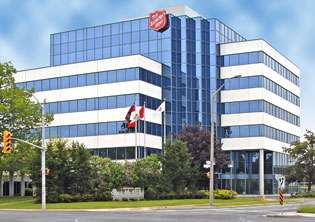 The Territorial Leaders met for the past few days, May 23-26, 2006, with a primary agenda of discussing an administrative restructuring proposal. Please find the interim report issued by the Territorial Commander.
The Territorial Leaders met for the past few days, May 23-26, 2006, with a primary agenda of discussing an administrative restructuring proposal. Please find the interim report issued by the Territorial Commander.
Territorial Leaders Conference
May 23 ' 26, 2006
Administrative Restructuring Progress Report
Mandate:
The Territorial Leaders Conference in June 2005 developed a mandate to look at restructuring the administration of the territory to achieve greater effectiveness in the advancement and support of ministry, and an improved stewardship of all resources.
Process:
A representative Task Force was commissioned to survey and obtain feedback for the territory to produce an administration concept proposal to meet these Goals and Outcomes.
- 1. An administration that responds positively to ministry unit needs for empowerment and added value to achieve mission results.
- 2. To create a seamless administration that eliminates duplication, clarifies roles and expectations to build a cohesive support for the mission agenda for ministry units.
- 3. Reduce unnecessary administration costs to free up resources for ministry growth.
- 4. To help all Salvation Army units to live out the core values of The Salvation Army in Canada and Bermuda.
Survey Results Summary:
Approximately 250 stakeholders completed a survey and 19 focus groups comprising of 240 Salvationists addressed the general question of 'What support services do you and your ministry unit need from headquarters?' In summary they said:
- ' Provide a consistent relational support personally and in ministry development.
- ' Provide expertise and knowledge in business services of finance, property, human resources, IT, etc.
- ' Hold us accountable for mission results and not micro-manage our ministry operation.
Symposium Desire:
In addition 200 delegates to the November 2005 symposium (75% lay), and a voice of 1,000 persons told us that they desired administration that would be more supportive and empowering of their ministry.
Leadership Culture and Style:
To realize the desires and aspirations of this dialogue, leadership style and culture will have to change. It will need to become:
- ' Participative rather than prescriptive.
- ' Coaching and mentoring focused.
- ' Engaging with leaders to facilitate options, solutions and ministry innovation that spring out of local gifting, opportunities and vision.
- ' Working at all levels to develop solid and achievable ministry results with accountability for outcomes
Administrative Model Action:
To achieve the desired leadership culture identified we will:
- ' Design and implement a training plan to develop this leadership style.
- ' Appoint trained and equipped divisional secretaries strategically throughout the territory having a reasonable number of ministry units to be the first and primary person for ministry leadership support, coaching, and empowerment to achieve ministry results. They will be a consistent go-to person to participate in mission effectiveness.
- ' The divisional secretaries will be supported by divisional leaders and teams that provide access to business and ministry expertise as needed.
Next steps:
Details of the proposed administration model will be shared with focus groups across the territory to ensure that the proposed administration approach meets the new leadership style
M. Christine MacMillan
Territorial Commander
May 26, 2006
Click here for PDF version of the report